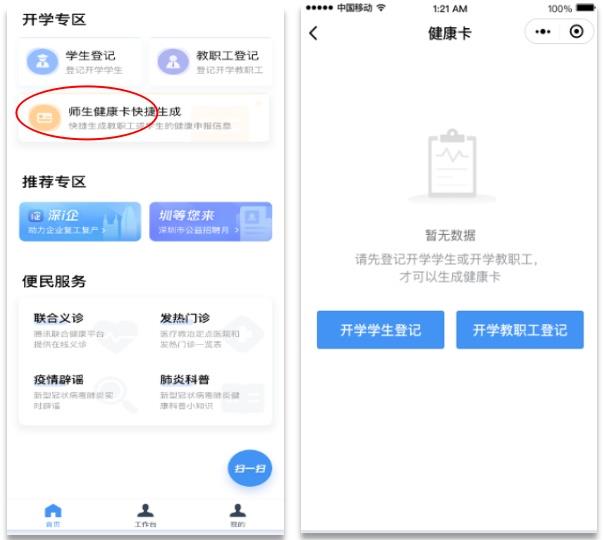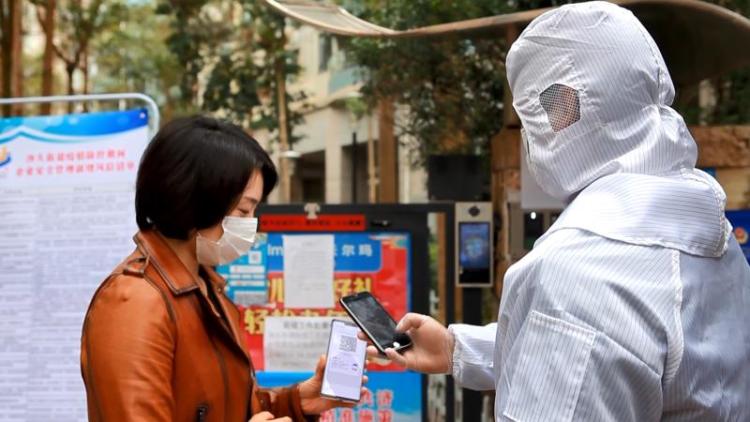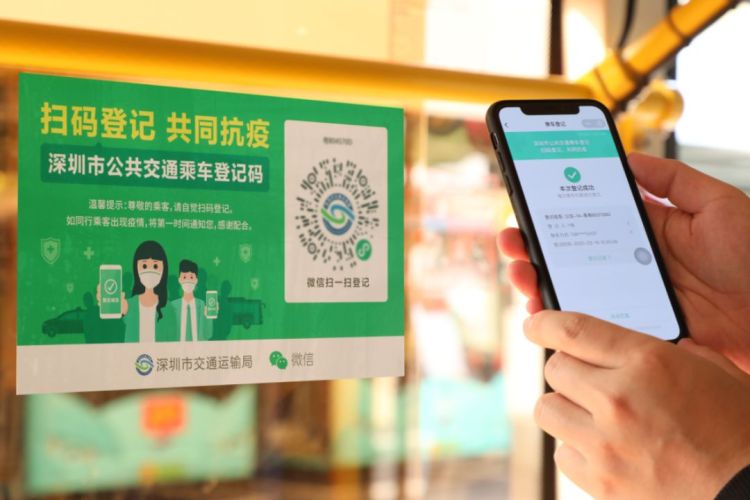Re-entry code, health code, bus code … Shenzhen people’s "code" life is becoming more and more convenient.
Original title: Re-entry code, health code, bus code … Shenzhen people’s "code" life is becoming more and more convenient.
See Shenzhen Client Shenzhen News Network on May 3, 2020.(Shenzhen business dailyReporter Chen Shu) After the May Day holiday, schools in Shenzhen will resume classes one after another. Punch in the health card before the resumption of classes, and the "resumption code" has become the first health guarantee line for offline school. During the epidemic in COVID-19 this year, in addition to re-entry codes, health codes and boarding codes also played an active role in urban prevention and control. As the city with the highest popularity of mobile Internet in China, "bright code" and "scanning code" have become the daily life of Shenzhen people, which is the best embodiment of the digitalization level of this city.

Photo: Before the start of school, students should declare health information in the opening area of the "Deep I You-Self-declaration" platform and obtain the "Re-study Code".
On April 27th, more than 140,000 students from 416 junior and senior high schools (campuses) in 11 districts of Shenzhen returned to school to resume classes. After May 11th, students of other grades in primary and secondary schools will return to school in batches. From May 2, non-graduating students in Shenzhen also need to declare health information in the opening area of the platform of "Shen I You-Self-declaration" and obtain the "Re-entry Code" before returning to school.
It is understood that in order to ensure that millions of primary and secondary school students in Guangdong can return to school safely, Shenzhen primary and secondary schools started the "Tencent Re-learning Code" in early April and put it into the preparatory work for returning to school. The resumption code has opened two major ports, personal WeChat and enterprise WeChat. Students or parents can report their health status through the enterprise WeChat every day and get the corresponding "resumption code". There are three colors of re-entry code: green re-entry code means you can go back to school with peace of mind; Red or yellow, it needs to be isolated according to regulations. After the start of school, the resumption code will also be used as the main means of daily morning and afternoon check-ups for teachers and students, continuously collecting health data of teachers and students, and doing a good job in school health monitoring and management.

Photo: The citizens only need to "light up" the health code, and the staff only need to "sweep" to pass quickly without contact.
In addition to the re-entry code, the "health code" has also become an important tool to help the government and enterprises in digital management during the epidemic. On February 1st, Shenzhen Municipal Government Service Data Administration, together with the Municipal Health and Health Commission and Tencent, launched the platform of "Deep I You-Self-declaration", and Shenzhen people landed on the platform to declare and generate personal health codes. In residential quarters, enterprise parks, administrative service halls, shopping malls and supermarkets and other places, citizens only need to "light up" the health code, and staff only need to "sweep" to pass quickly without contact. By April 24th, the total number of users was 20.09 million, the number of health code applications was 18.43 million, the cumulative number of bright codes was 215 million, and the number of scanned codes was 11.67 million.

Photo: Passengers register by scanning the code on WeChat. If there is an epidemic, the "registration code" will inform the passengers by WeChat or SMS at the first time.
Shenzhen people’s travel "artifact" Tencent boarding code also played an active role during the epidemic. The ride code is a two-dimensional code ride service developed by Tencent based on WeChat applet, which provides users with a "ride first, then pay" travel experience through 0.2 second speed verification technology. Since landing in Shenzhen Metro in May 2018, the number of users of Shenzhen Metro boarding code has already exceeded 26 million. During the epidemic period, the ride information registration system developed by Tencent’s ride code team for public transportation allows passengers to register by scanning the code on WeChat. If there is an epidemic, the "ride registration code" will notify the same passengers through WeChat or SMS at the first time, so as to realize the traceability of passenger information.
As an important entrance of mobile Internet, QR code has penetrated into all fields of Shenzhen’s economic and social life. In Shenzhen, in addition to scanning the code to get information, handling business and paying fees, some offline life is also condensed into a "code": you can buy while watching in the supermarket, and you can check out by scanning the barcode with your mobile phone without queuing; In hospitals and social health centers, scanning codes can complete medical treatment links such as filing, registration, payment, and taking medicine; Take the Guangzhou-Shenzhen intercity railway, you don’t need to buy paper or even electronic tickets, you can enter the station by scanning the code through WeChat or Alipay; Whether it is a commercial block or a market shop, scanning code payment is common, and it has also spawned a large number of "code merchants" who do business with QR codes …
Digital government is active, offline life service is convenient, and Shenzhen people live in a rich "code", which reflects the city’s high digital level. According to Ant Financial, at present, Shenzhen people can complete traffic violation inquiry, road condition and bus inquiry, living payment and so on through Alipay wallet, Weibo and mobile phone Taobao, and Alipay has provided more than 140 urban services in Shenzhen. From the urban services provided by WeChat, Shenzhen has achieved a high degree of "mobile internetization" in areas related to people’s livelihood such as traffic control, entry and exit, and provident fund.
As the "most Internet" city in China, in 2017, more than 90% of Shenzhen netizens used their mobile phones to "touch the Internet". China Academy of Social Sciences released the Eighth Assessment Report on the Development Level of Smart Cities in China in 2018, which showed that the development level of smart cities in Shenzhen reached 76.3, ranking first in the country. Tencent Research Institute’s Digital China Index Report (2019) shows that Shenzhen’s digital index is second only to Beijing in China, and it ranks in the top two in terms of digital life and other index cities.
Tencent recently said that after the epidemic, Tencent is ready to open up the health code and more public services such as medical care, education and social security, so that citizens can travel on the "code" in their daily lives. "I hope to introduce the experience and accumulated ability of this anti-epidemic to the construction of future cities."